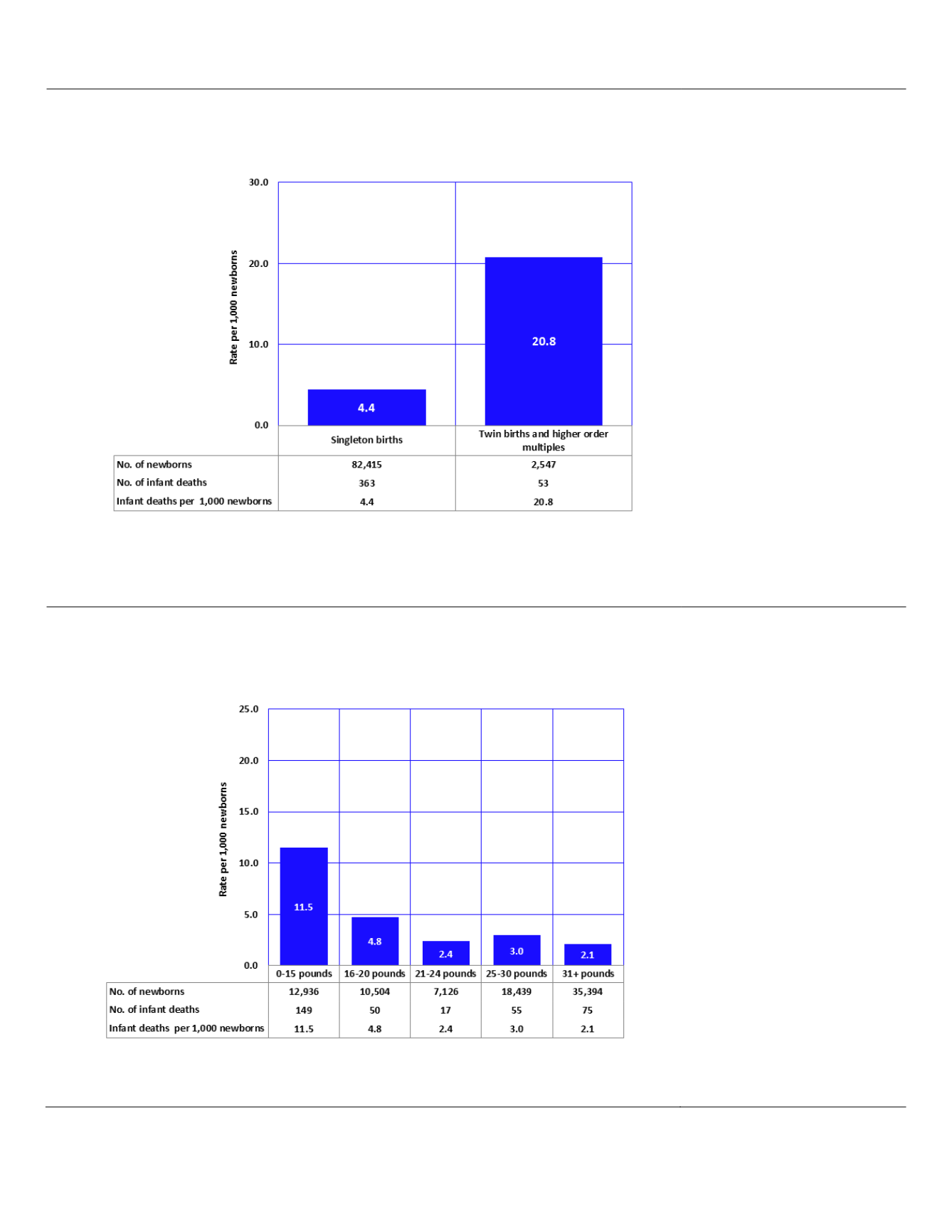
2C. AGE-SPECIFICMORTALITY
Infantmortality
Figure2C-4.2
InfantMortalityRates for Single andMultipleBirths, Arizona, 2013
Notes: 1 case in the complete 2013 birth filewasmissing plurality.
As already noted in Section 1B,
infants born in multiple
deliveries tend to be born at
shorter gestations and smaller
than those in singleton
deliveries. In 2013, infants born
in multiple deliveries were 12.7
times more likely (45.6 vs. 3.6
percent) to be born earlier than
expected (at less than 37
completed weeks of gestation)
and smaller (at less than 2,500
grams) than singleton births
(
Figure1B-10
).
The infant mortality rate for
single births was 4.4 in 2013
(
Figure 2C-4.2
). The infant
mortality rate for twin births or
higher order multiples was 20.8.
Babies born inmultiple deliveries
accounted for 3.0 percent of
births (
Table 1B-16
), but 12.7
percent of all infant deaths in
Arizona in 2013 (only those with
matching birth and death
records).
Figure2C-4.3
InfantMortalityRates byMaternalWeight GainduringPregnancy,
Arizona, 2013
Notes: 564 cases in the complete 2013 birth fileweremissingmaternal weight gain.
Infant mortality rates vary with
maternal weight gain during
pregnancy.
Insufficient
or
excessive weight gain during
pregnancy can negatively impact
both maternal and pregnancy
outcome. In 2013, as in previous
years, the risk of infant death
decreased
with
increasing
maternal weight gain, including
maternal weight gain of 31 or
more pounds (
Figure 2C-4.3
).
Among the 35,394women giving
birth in 2013 who gained 31 or
more pounds, the risk of infant
mortality was 2.1/1,000.
There is no coincidence that
mother?s weight gain has been
shown to have a positive
correlation
with
infant
birthweight (
Figure1B-22
).
148
Arizona Health Status and Vital Statistics 2013


